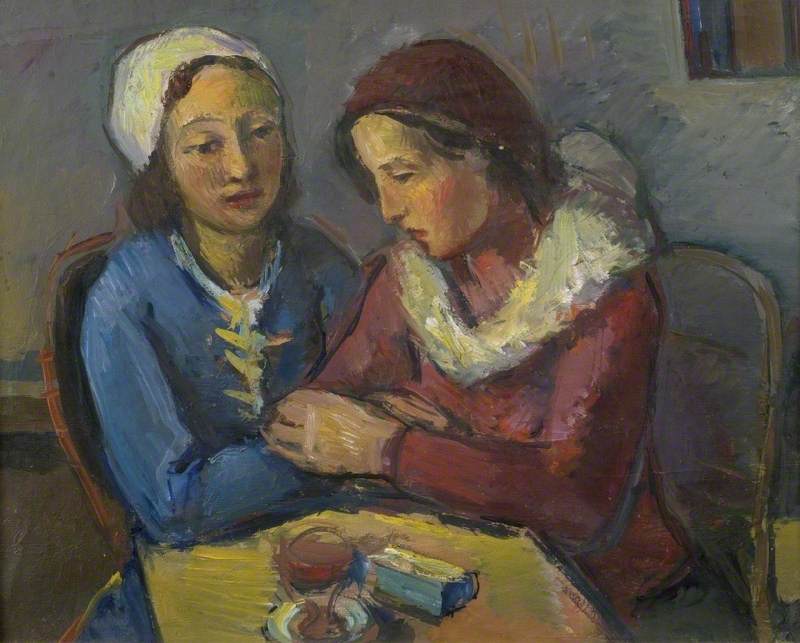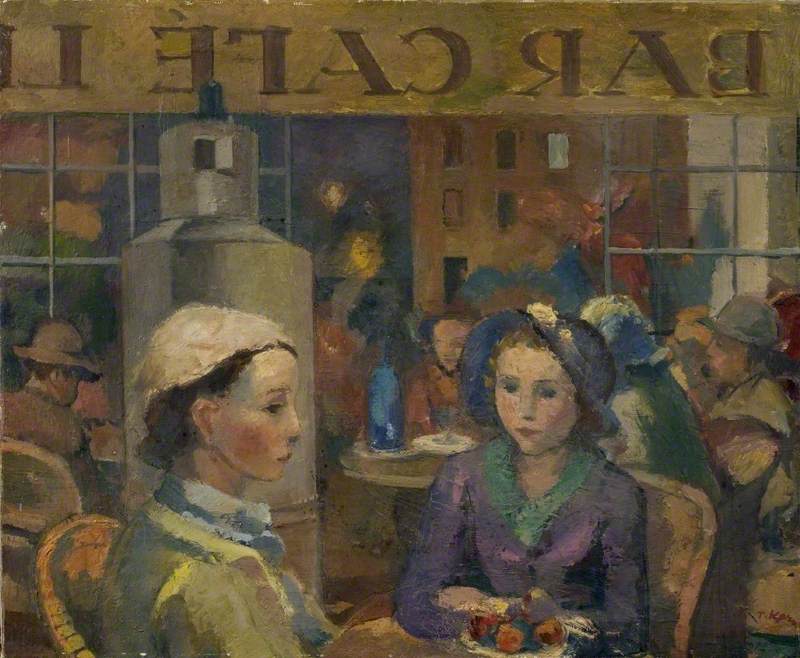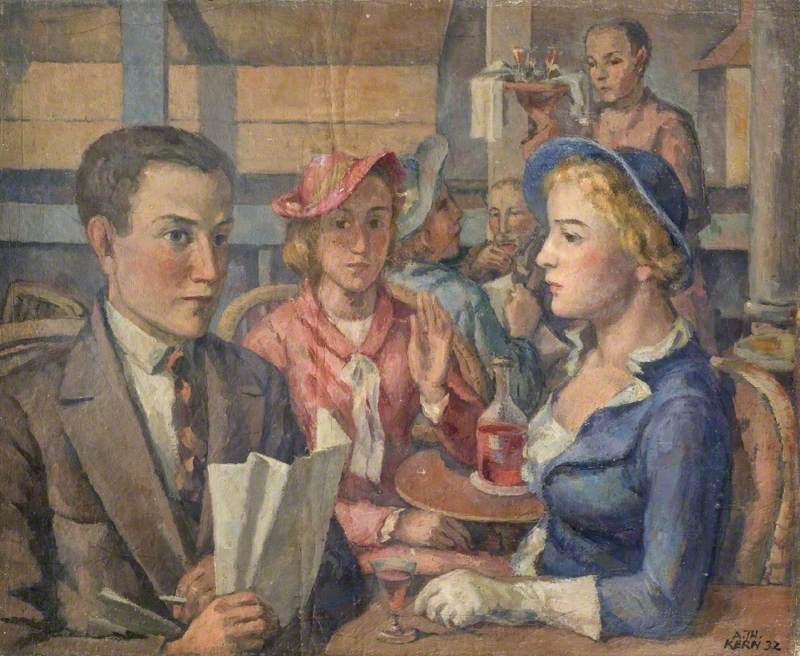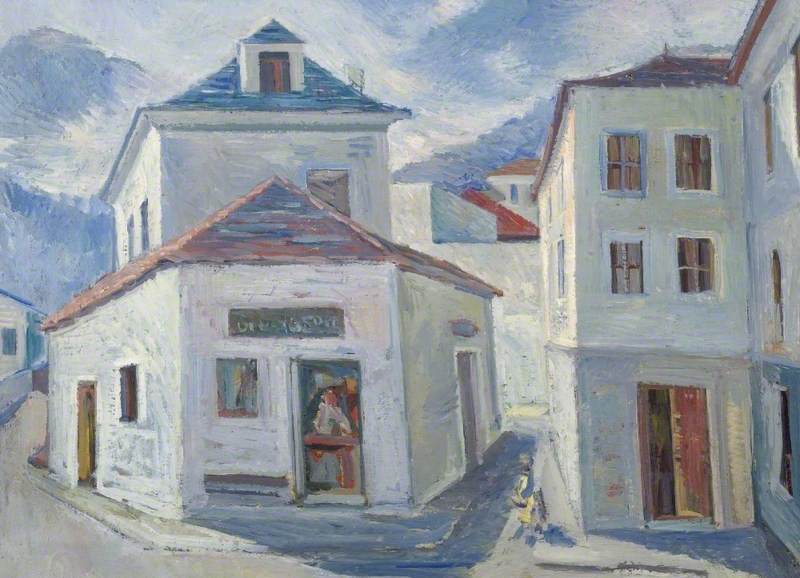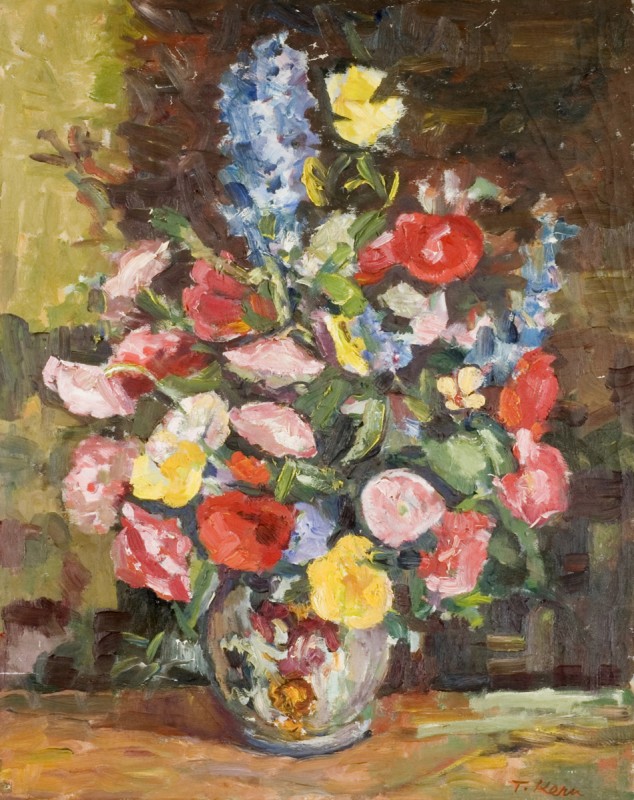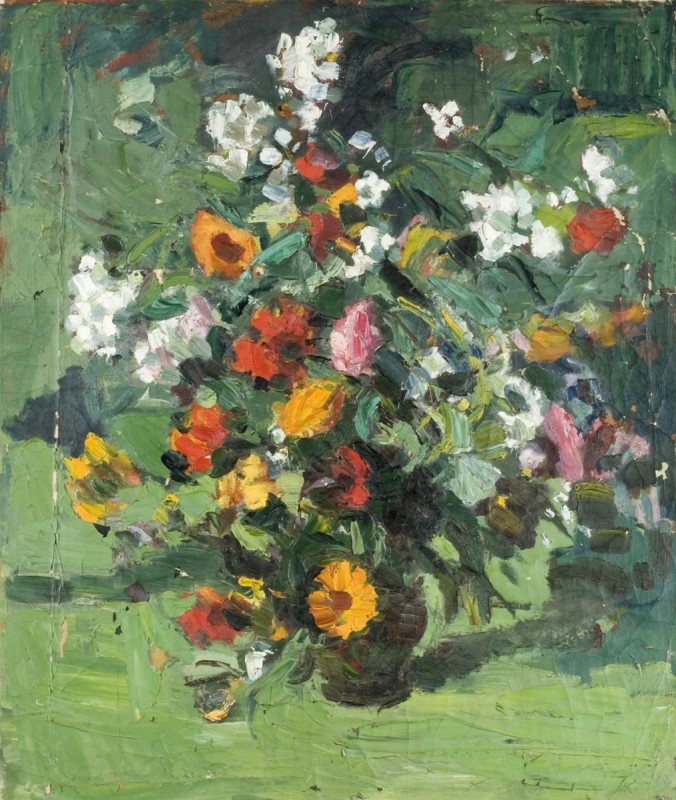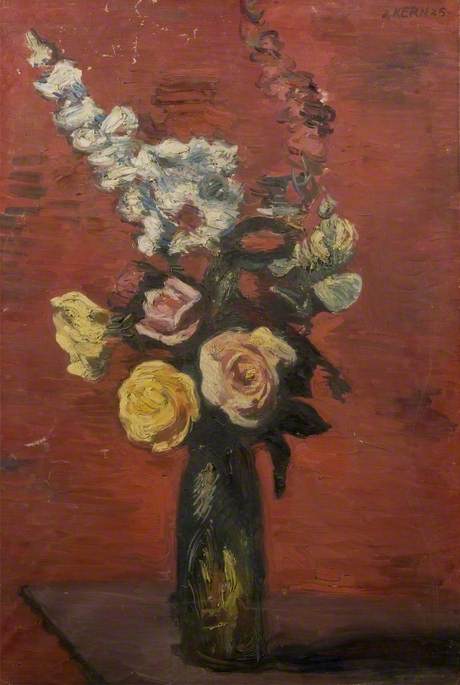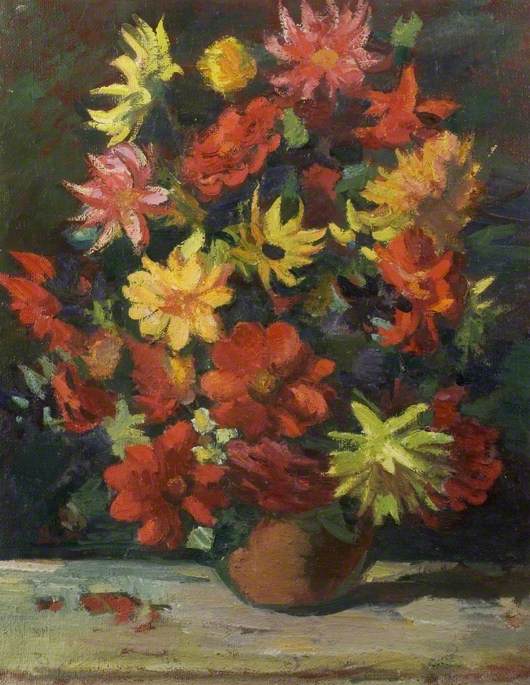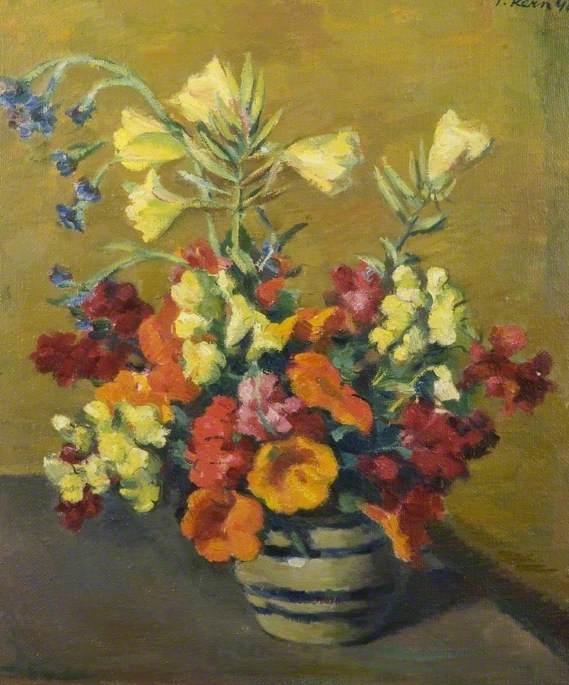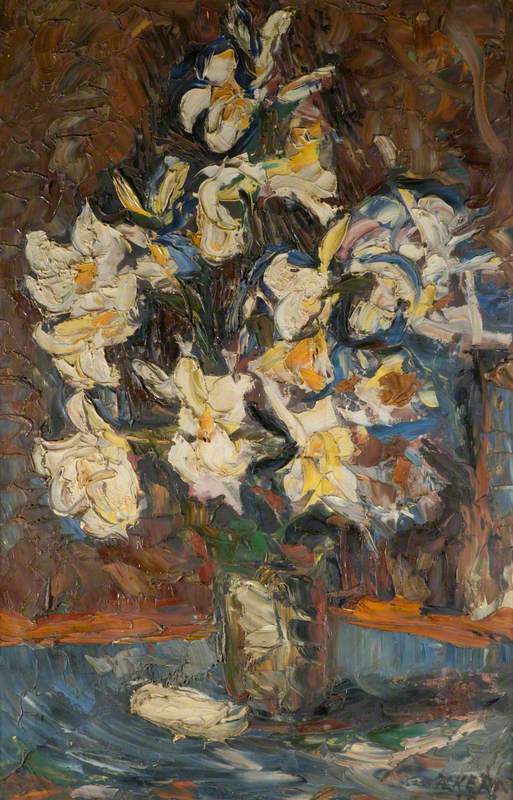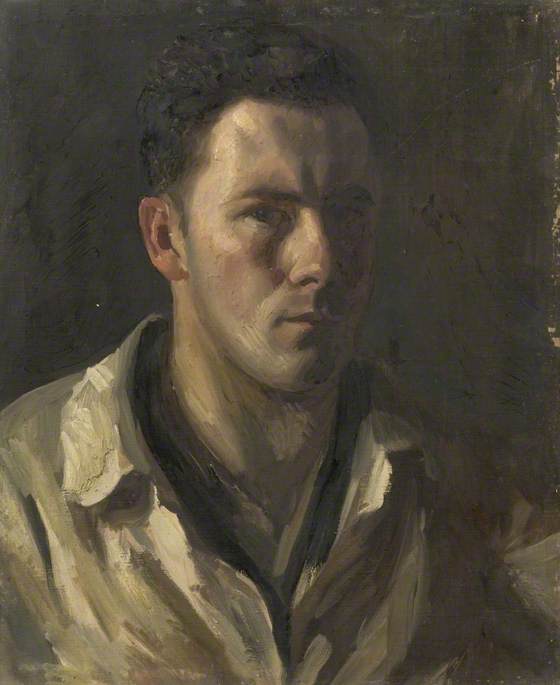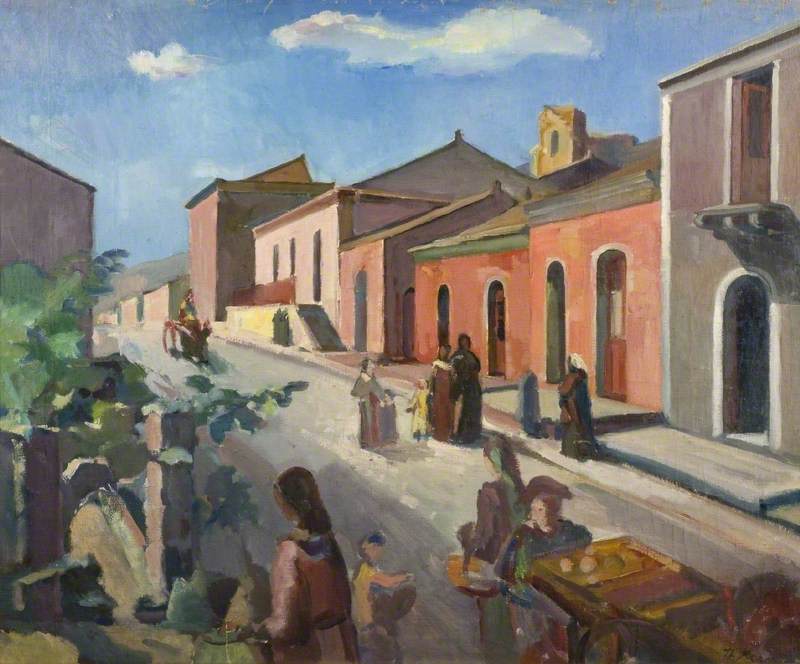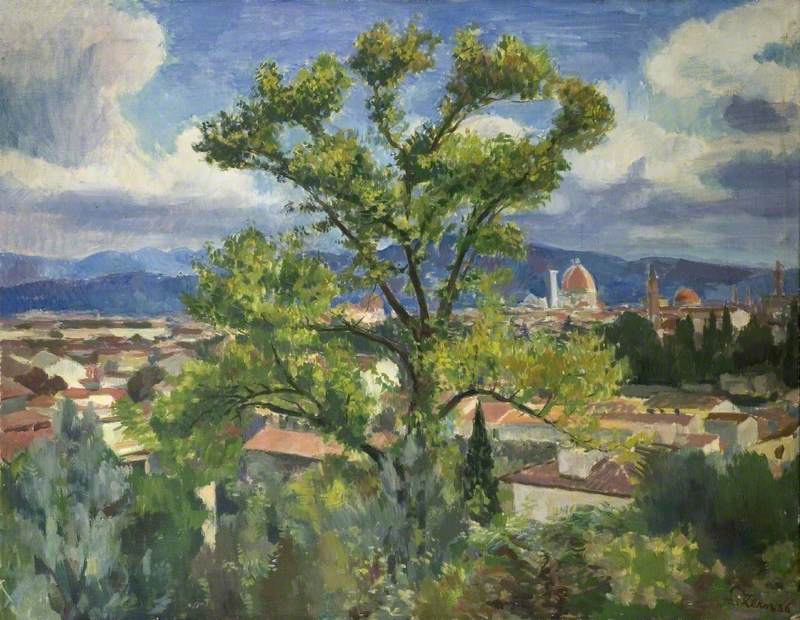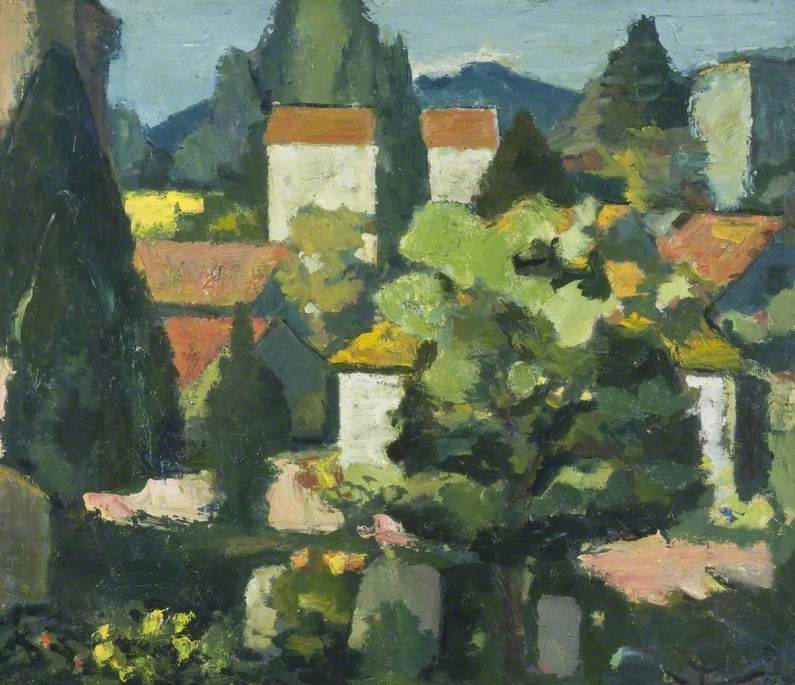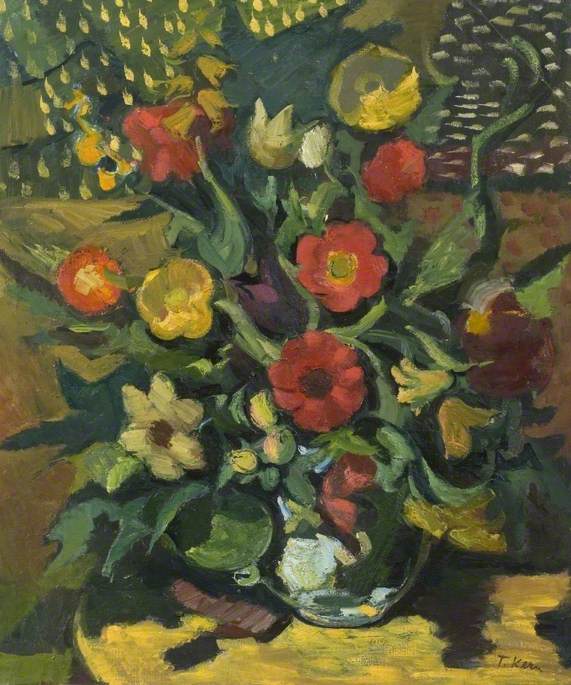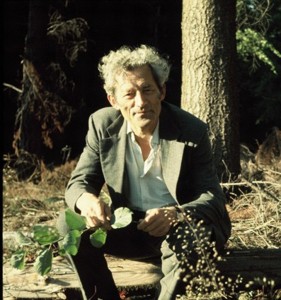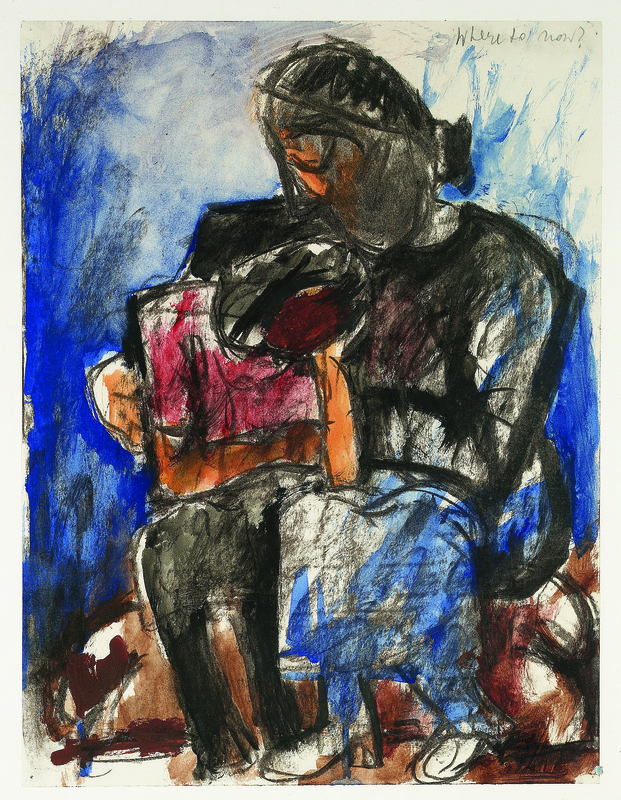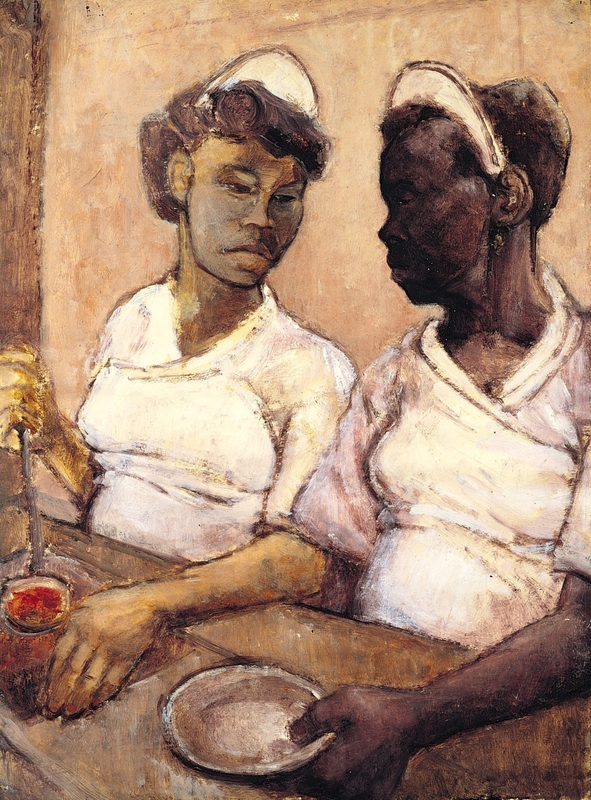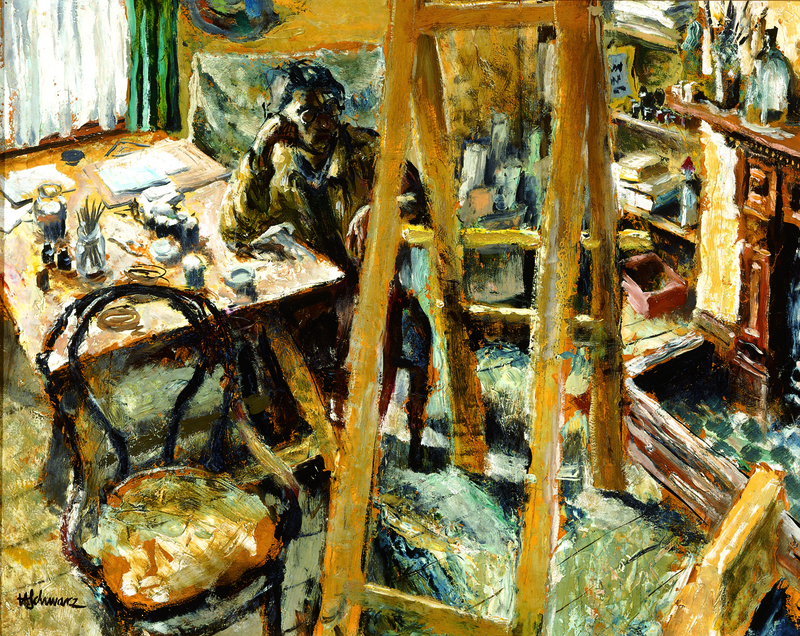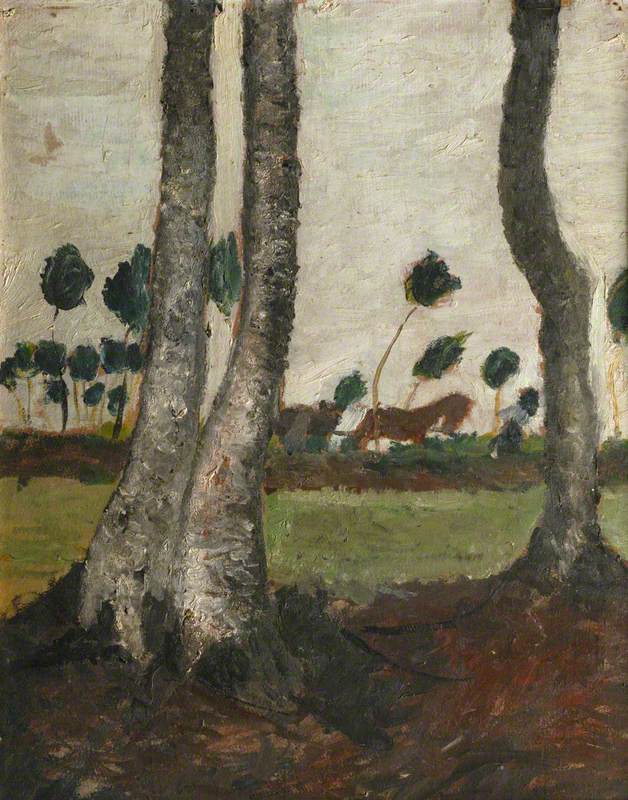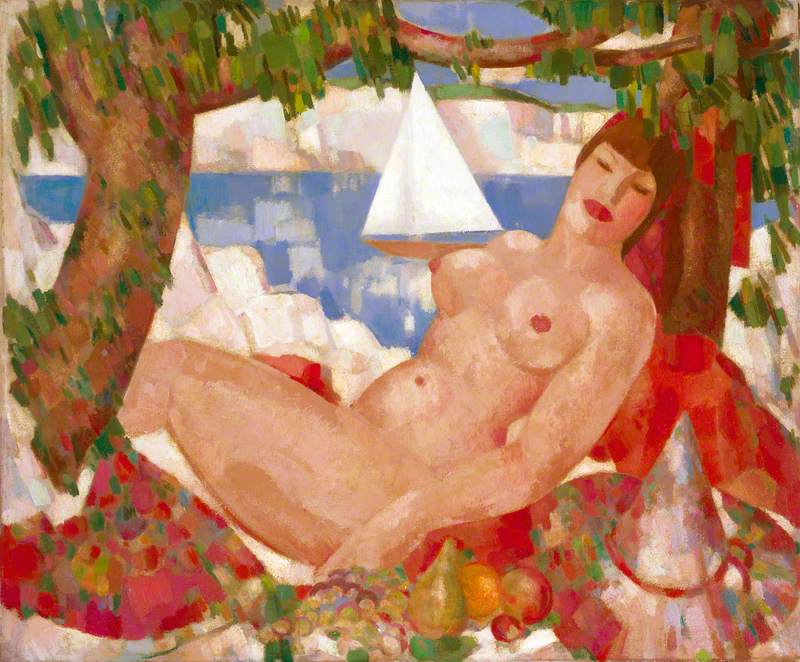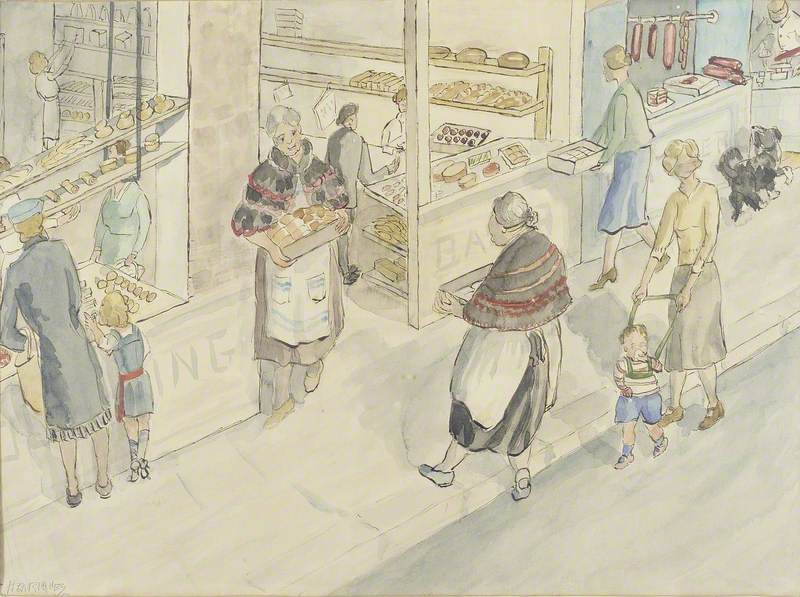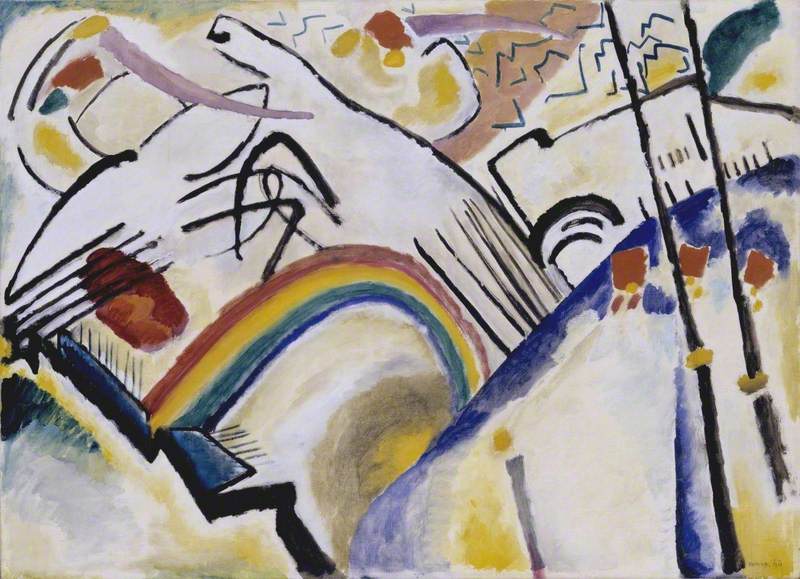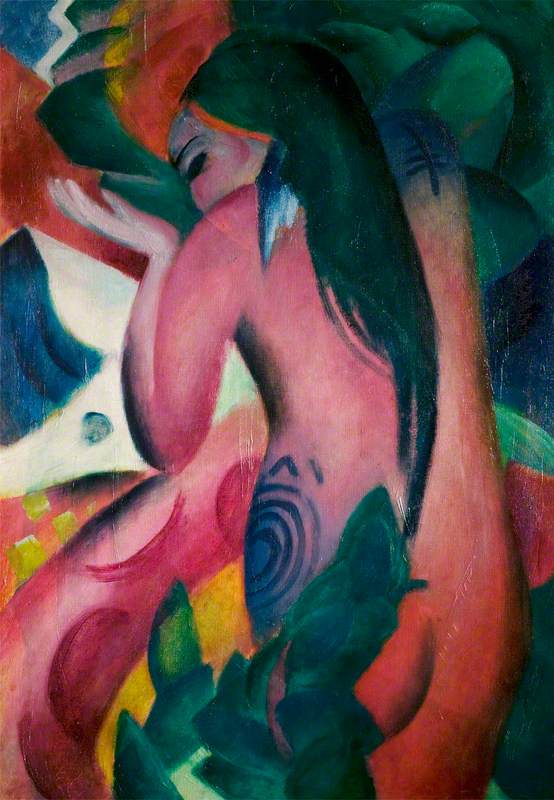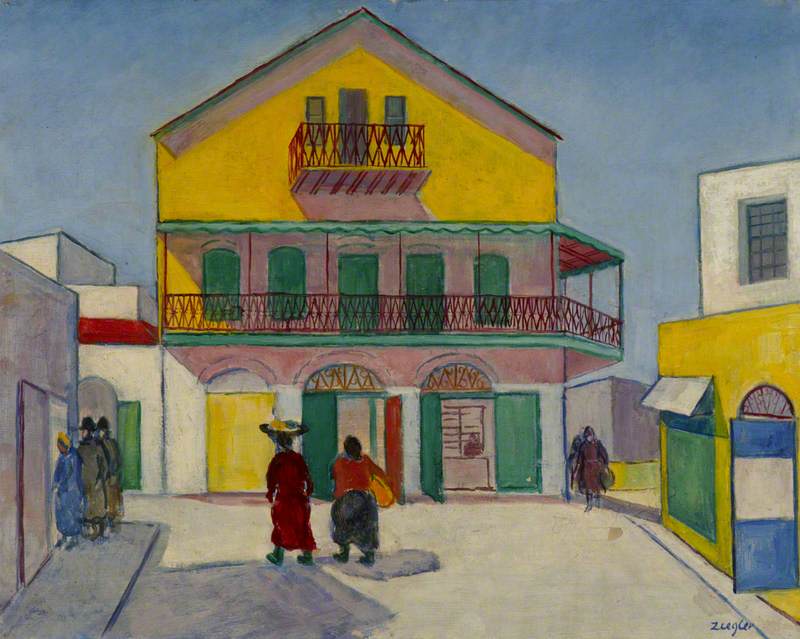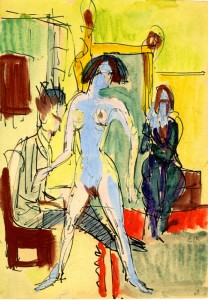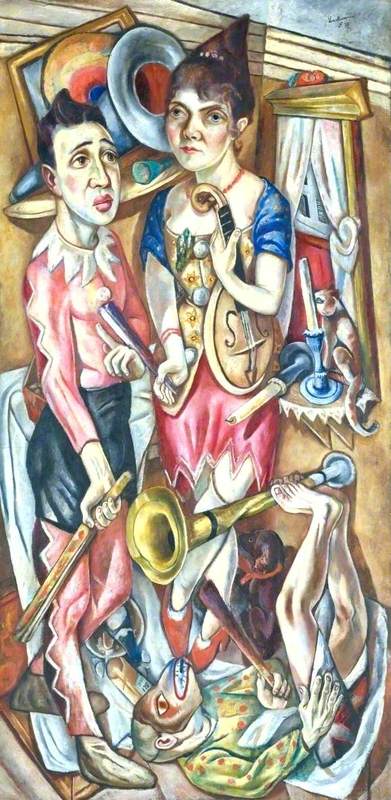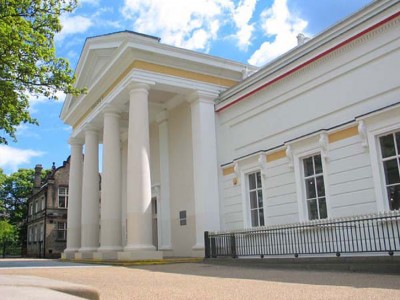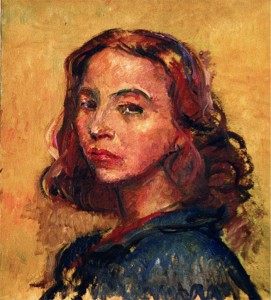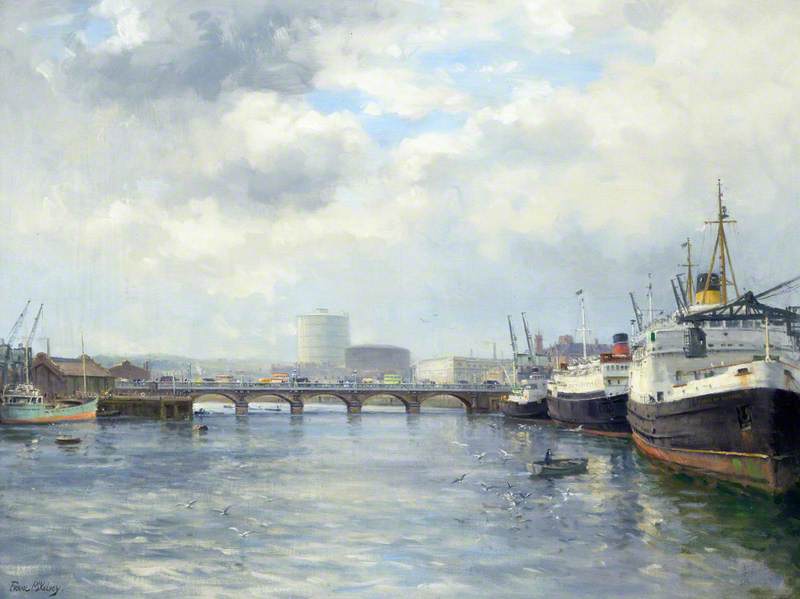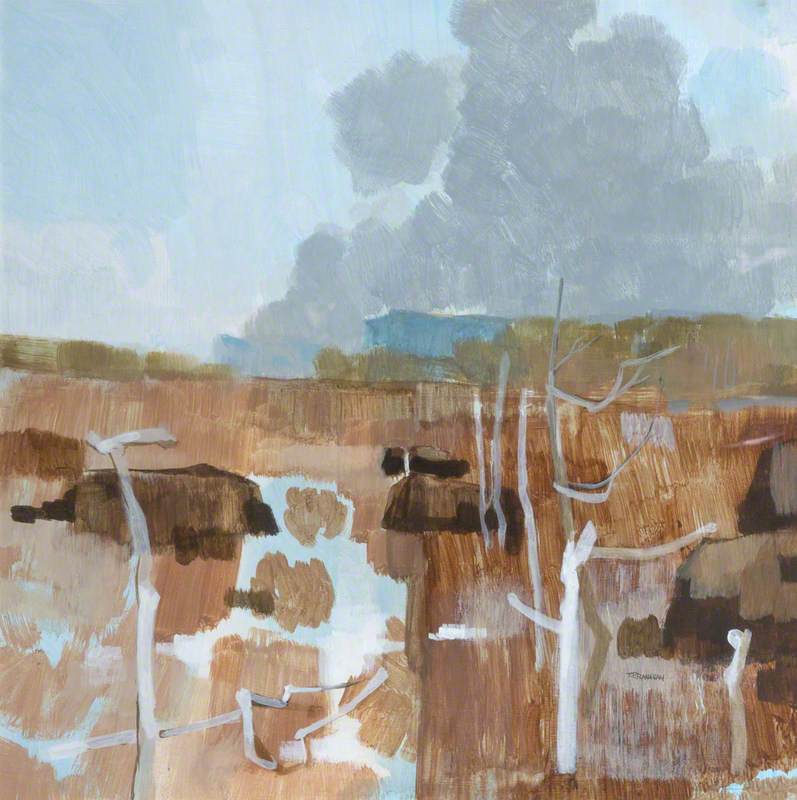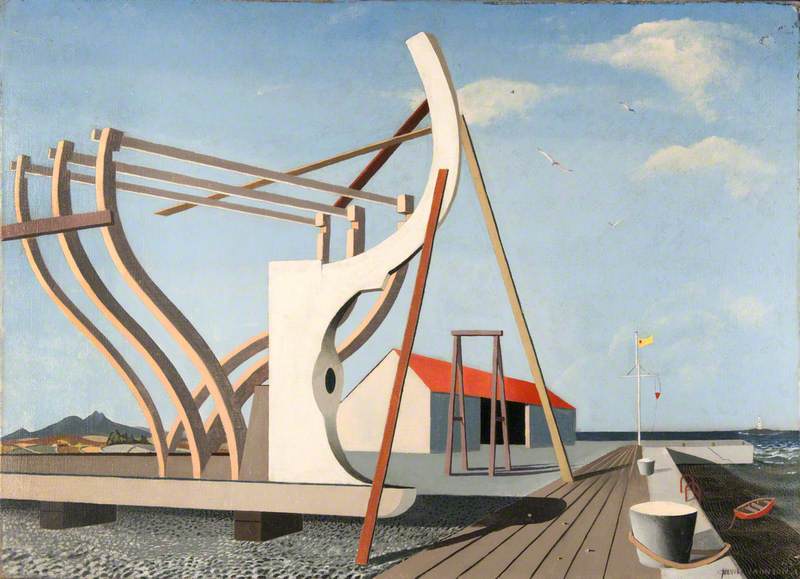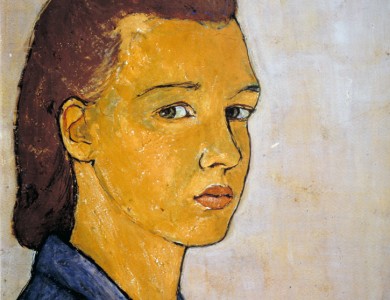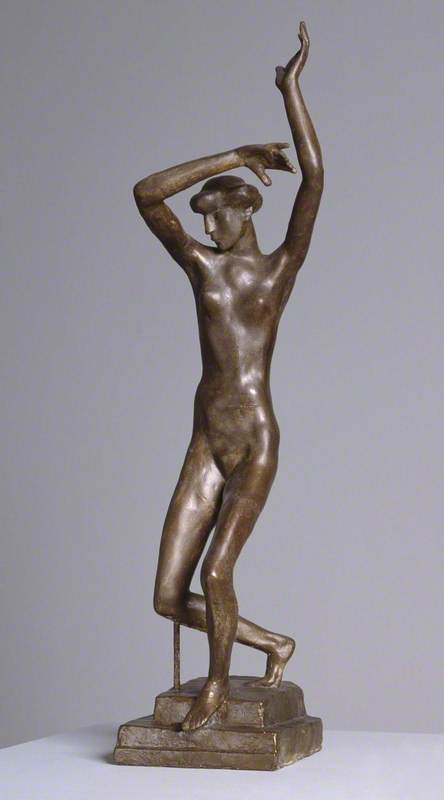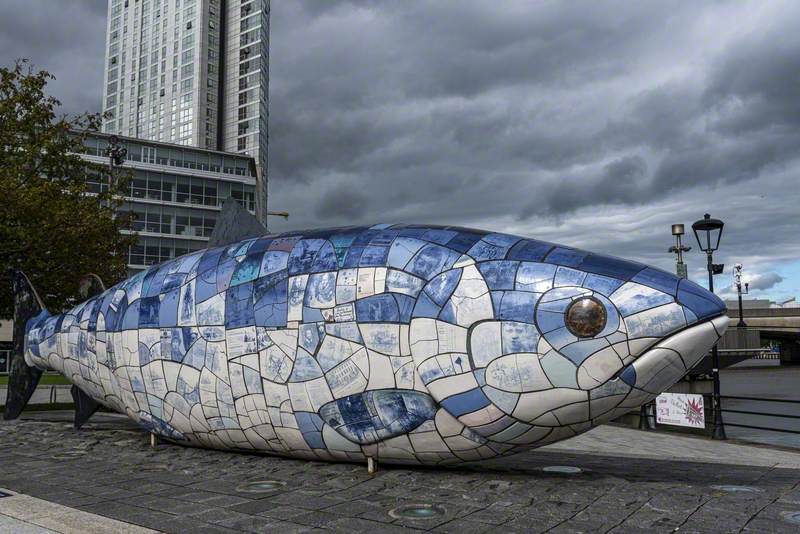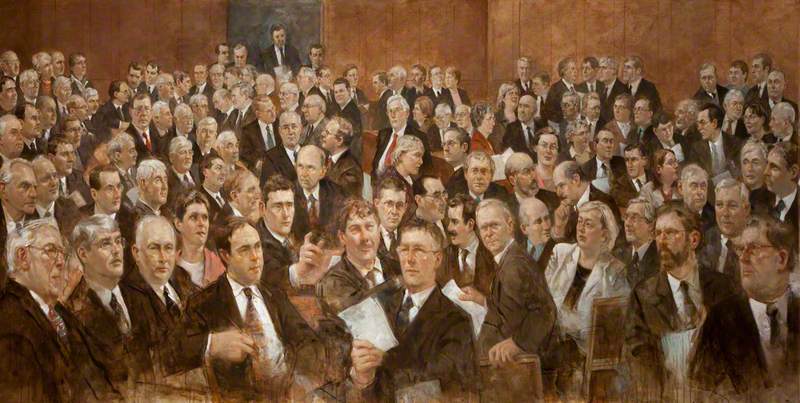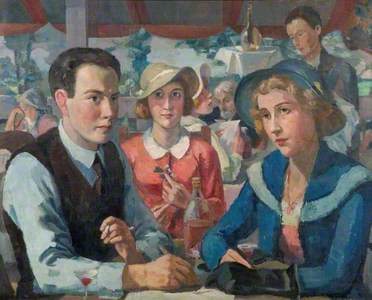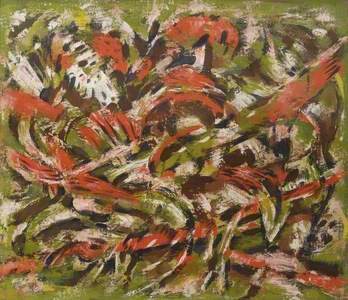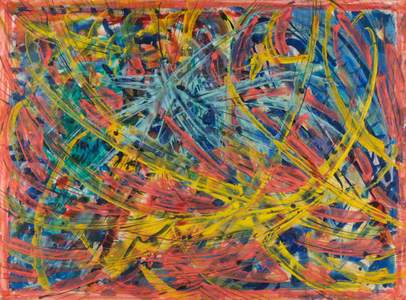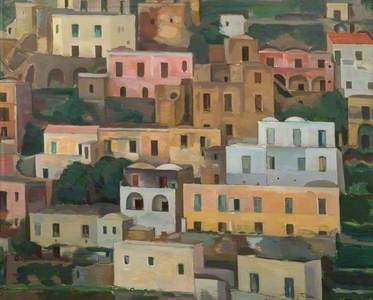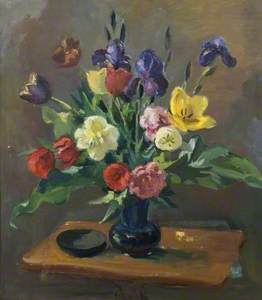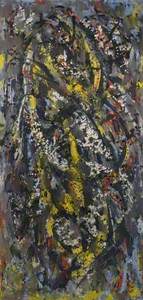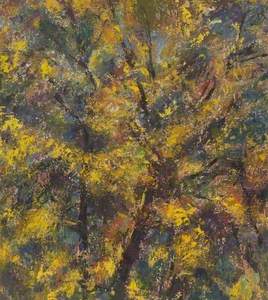The painter, teacher and sculptor Theodor Kern was born in Salzburg, Austria, in 1900. His father, Johann Kern, a municipal cemetery supervisor, and Ottlie Kern had three children – Theodor was the youngest.
Kern attended the Fine Art Academy in Vienna and established himself as a masterful mural painter for religious buildings in Salzburg and the surrounding area. Throughout his life, Kern travelled extensively around Europe and produced a substantial number of portraits, landscapes and still life paintings, most of which he donated to Wardown House prior to his death in 1969.
On some of his trips he would make short visits to friends outside Austria, while on other occasions, such as his visits to France and England, his travels would last longer. In 1931, Kern lived in Paris, holding exhibitions and occasionally selling portraits and paintings of French cafés.
However, with commissions and sales being rather infrequent, life in Paris was full of hardship for the artist. Considering his living conditions in France, Kern accepted an invitation to live in England in 1932. During this period, Kern had the opportunity to teach at Eton College. Unfortunately, his stay in England was interrupted by his mother's death in 1934, after which he temporarily returned to Salzburg, before later settling in Vienna.
The years between 1923 and 1938 were a period of exploration for the artist – a geographic and artistic search that led to a diversity in style, theme and medium: oil and watercolour paintings, painting on glass, the creation of frescoes and sculptures of both wood and stone. Kern excelled in each of them.
The years between 1936 and 1938 were especially challenging for Kern. The uncertainty and fear Kern felt with the imminent prospect of the Nazi occupation of Austria can be observed in his landscape paintings of Florence in 1936 and Switzerland in 1938. The subtle melancholy that can be discerned in these two paintings becomes more evident when examined against his landscapes from 1930.
The buildings under the calm blue sky in Street Scene, Sicily (1930) are painted in buoyant colours, creating a sense of a carefree summer day.
Conversely, the intensity of Kern's Florentine Landscape (1966) is reinforced by an expressive turbulent sky dominated by darkened clouds closing in on each side of the canvas, creating the impression of a coming storm.
Similarly, in the foreground of Kern's Village Scene, Switzerland, are three white square objects resembling tombstones. Although not explicitly stated in the title, the painting is clearly a depiction of a cemetery overlooking the Swiss village, which in itself means nothing, but it is an unusual subject matter for an artist whose paintings usually depict far more lighthearted objects such as boats, flowers, animals, storefronts and people engaged in everyday endeavours.
Inspired by the art of Gauguin, Van Gogh, Picasso and Pollock, Kern began experimenting with different painting styles early on in his career. His 'Still Life' paintings display most clearly a deconstructive tendency, but his art only reached its purely abstracted form after 1950.
Van Gogh's influence on Kern's Still Life, Yellow and Red Flowers Arranged in a Vase is apparent in the vivid colours, swaying brushstrokes and thickly applied layers of paint. However, Kern was not merely imitating the painting styles that he admired. Rather, he made them his own by selecting certain qualities from each and leaving out others as he saw fit. This work incorporated the exaggerated brushstrokes of Expressionism but added depth more commonly found in Impressionist still life.
In Floral Study, Kern seems even less concerned with pictorial rules. Instead, the shapes are heavily abstracted, putting emphasis on the explosion of colour that dominates the painting. This denotes a step towards the artist's late and definitive style – the abstract paintings which he referred to as 'compositions'.
In 1938, fearing his own fate after assisting his friends to flee German-occupied Austria, Kern fled to England and found temporary shelter in Kensington. In 1940, Kern was sent to the internment camp on the Isle of Man for a short period of time along with other Austrians who were considered enemy aliens. Soon after, the artist settled in Hitchin which was his home until his death in 1969. Between 1950 and 1955, Kern taught at Luton University, and it was then when his abstract 'compositions' came to life.
His abstract canvases were something that admittedly nobody expected, even though his preceding paintings that employed free exploration of colour were already indicative of his attempt to free himself from the limitations of visual representation. Kern spoke of his compositions as being images 'reflecting memory or emotion, constellations of movement and colour'. In his memoir, the artist mentions that his compositions are 'sometimes almost abstract, but almost always resulting from an experience of inner or outer nature.'
Stefani Bednarova
Seven of Kern's landscape paintings, two of which are included in this article, are on display at Wardown House until 30th August 2019, followed by an exhibition of Kern's 'Compositions'.
